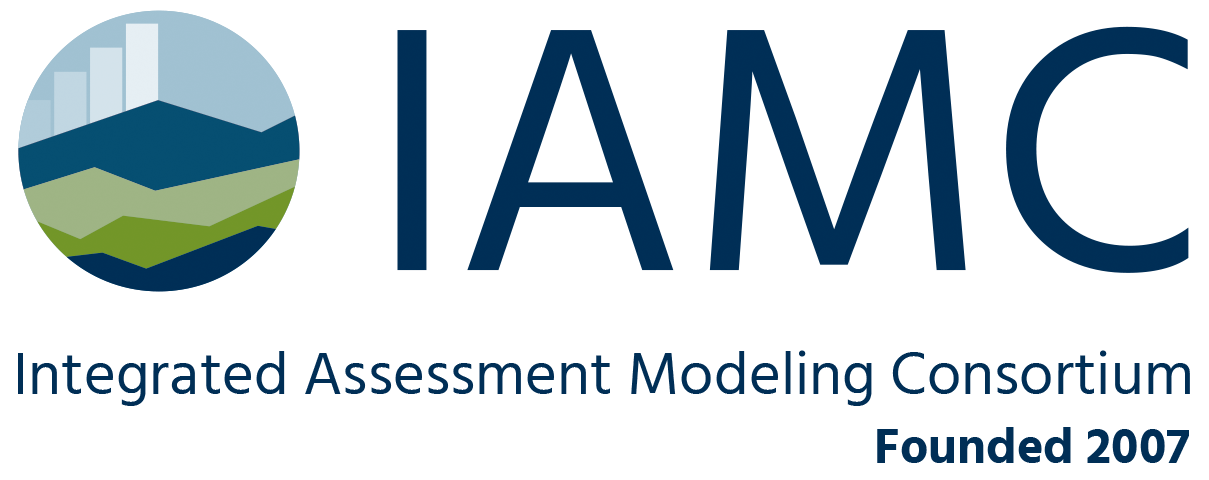Perla Rivadeneyra, Giacomo Falchetta
During the Sixteenth IAMC Annual Meeting held last 14 November – 16 November 2023, the Integrated Assessment Modeling Consortium granted
Perla Rivadeneyra (Fondazione Eni Enrico Mattei)
with the Best In-Person Poster Award
and
Giacomo Falchetta (IIASA and CMCC)
with the Best Online Poster Award
A global land suitability assessment of Nature-based solutions
Perla RIVADENEYRA, Fondazione Eni Enrico Mattei
AUTHOR(S): Carlo Giupponi, Fondazione Eni Enrico Mattei | Fabio Farinosi, EC Joint Research Centre | Perla Rivadeneyra, Fondazione Eni Enrico Mattei.
Nature based Solutions (NbS) have been widely studied in recent years to tackle climate change and associated climatic hazards.
In this study we present an innovative global land suitability analysis to guide stakeholders on the locations with the highest potential for the implementation of NbS.
We selected the 10 NbS with the largest carbon sequestration potential for protection and restoration of inland and coastal wetlands, forests, grasslands, as well as afforestation and agroforestry (management measure).
In this study, we combine relevant biophysical and socioeconomic, sociopolitical, institutional and governance indicators for each NbS, and most importantly, we consider the major cobenefits provided by NbS, such as biodiversity protection/enhancement, fire deterrence, or the reduction of extreme climate events, among others. Additionally, we include an uncertainty analysis of each NbS based on projected changes of future scenarios of global change considering land use and landuse changes, socioeconomic and de mographic trends.
For this study, we combine MultiCriteria Analysis, fuzzy set theory and spatial statistical analysis to provide a land suitability index combining the indicators described above, at the global level at a 10 km resolution.
Moreover, we create land suitability classes according to the Food & Agriculture Organization (FAO) guidelines.
In particular, fuzzyset theory enables us to substitute the sharp boundary that divides members from nonmembers of a group for a continuum of grades of partial membership (Wang et al., 1990).
The aggregation is carried out using Multicriteria Analysis, to produce a single
suitability map. To express the different importance of the various indicators in contributing to suitability determination, relative weights are adopted, and defined through an expert elicitation exercise. The multicriteria aggregation of the indicators is achieved through the Ordered Weighted Averaging (OWA) methodology (Yager, 1988), this approach incorporates a second set of weights to modulate the additiveness of the aggregation. Therefore, different risk attitudes of decisionmakers can be represented with a vector of weights applied to the ordered values of every single pixel of the map. The second weighting round is applied to the ordered sequence of values previously weighted using Simple Additive Weighting (SAW). Once the index is computed using OWA,
we use the definitions laid out by FAO (1976), which divide Land Suitability into two categories, S for “suitable” and N “not suitable”, including five classes: S1 to S3 with a decreasing level of suitability (Highly,Moderately and Marginally Suitable), and N1 and N2 assigned to areas that are currently or permanently unsuitable, respectively, depending on the possibility of overcoming the current limitations observed. We reduced these 5 categories into 4, thus: S1, S2, S3 and N.
Our results show that for most NbS, tropical areas have great potential for NbS implementation. Boreal countries like Canada and Scandinavia are identified in our analysis as interesting locations for the development of NbS projects. This is due to a combination of vast ecosystems to protect and as well as for
their sociopolitical and institutional settings. Moreover, we observed that the NbS with the largest suitable areas of forest protection are located in the Amazon, Sweden, Indonesia, and Canada. The next NbS by extension of the suitable regions is grassland protection, where the most suitable areas lie in Australia, Russia and Ireland. Furthermore, agroforestry is better suited in the northern USA, Eastern Europe and Central Asia.
The most suitable areas for inland wetland restoration and protection are in Russia, Canada and northern of the United States. Finally, coastal wetland restoration and protection is most suitable along the tropical countries of Asia, Central America, and Caribbean countries as well as in northern Australia. Finally, the most suitable areas for reforestation and afforestation are in the Amazon and Southeast Asia.
Integrated modelling of renewable energy-centered sustainable development futures in rural Africa
Giacomo FALCHETTA, International Institute for Applied Systems Analysis (IIASA)
AUTHOR(S): Falchetta, Giacomo, IIASA & CMCC Ireland, Gregory, University of Cape Town | Tuninetti, Marta, Politecnico di Torino Vinca, Adriano, IIASA
We introduce and implement a modelling framework for multi-sectoral integrated assessment and planning of technologies, investments and policies to promote climate-water-renewable energy-agriculture sustainable development in developing countries (“RE4AFAGRI”). We calibrate and soft-link two demand-side models representing land-water-crop-food-energy requirements and two supply-side models, an energy access planning and a nexus-extended Integrated Assessment Model (IAM). Specific focus is put on the enabling role of renewable energy to achieve energy access, agricultural productivity and broader sustainable development objectives in different climate, socio-economic, and policy ambition scenarios. Multi-scale, multi-sectoral insight from the integrated modelling framework can inform public and private decision-makers to explicitly consider nexus synergies to promote sustainable development futures.
Criteria for judging posters:
Effectiveness in communicating research findings, motivation and methods.
Scientific merit of the research
Effectiveness of the presenter in communicating the research results, motivation, and methods
While there were many excellent posters and poster presenters at this year’s IAMC meeting, the above posters were consistently ranked at the top by all the judges.
2022 Online Poster Nominating Comittee: Shinichiro Fujimori (Chair), Jennifer Morris, Saritha Sudharmma Vishwanathan, Keywan Riahi, Vassilis Daioglou, Bas Van Ruijven, Peter Russ, Roberto Schaeffer
2022 In-Person Poster Nominating Comittee: Detlef van Vuuren (Chair), Jae Edmonds, John Weyant, Laurent Drouet, Stephanie Waldhoff, Christoph Bertram, Volker Krey, Matthias Weitzel





